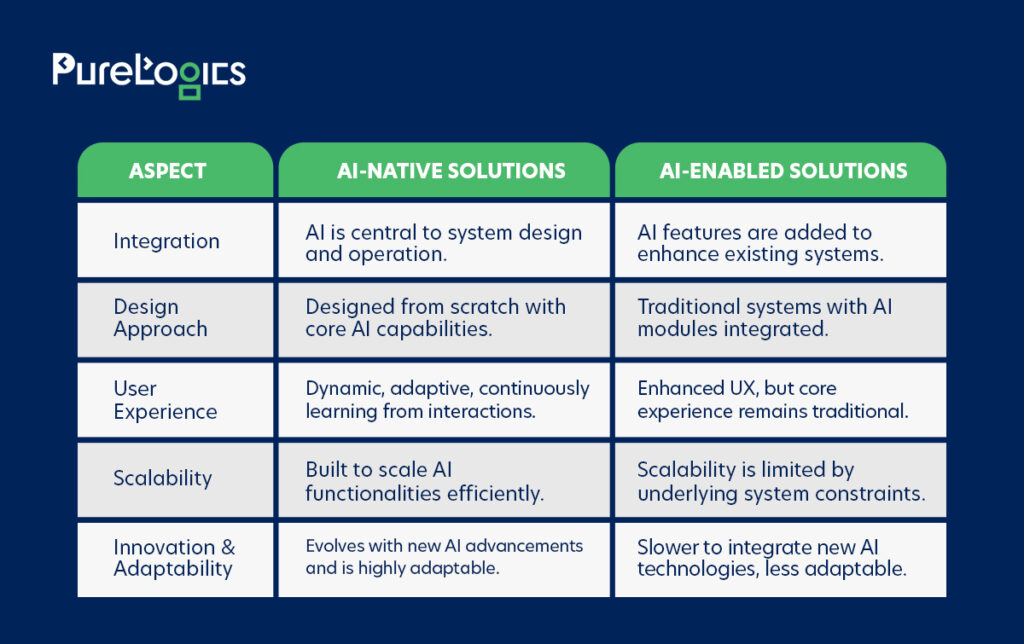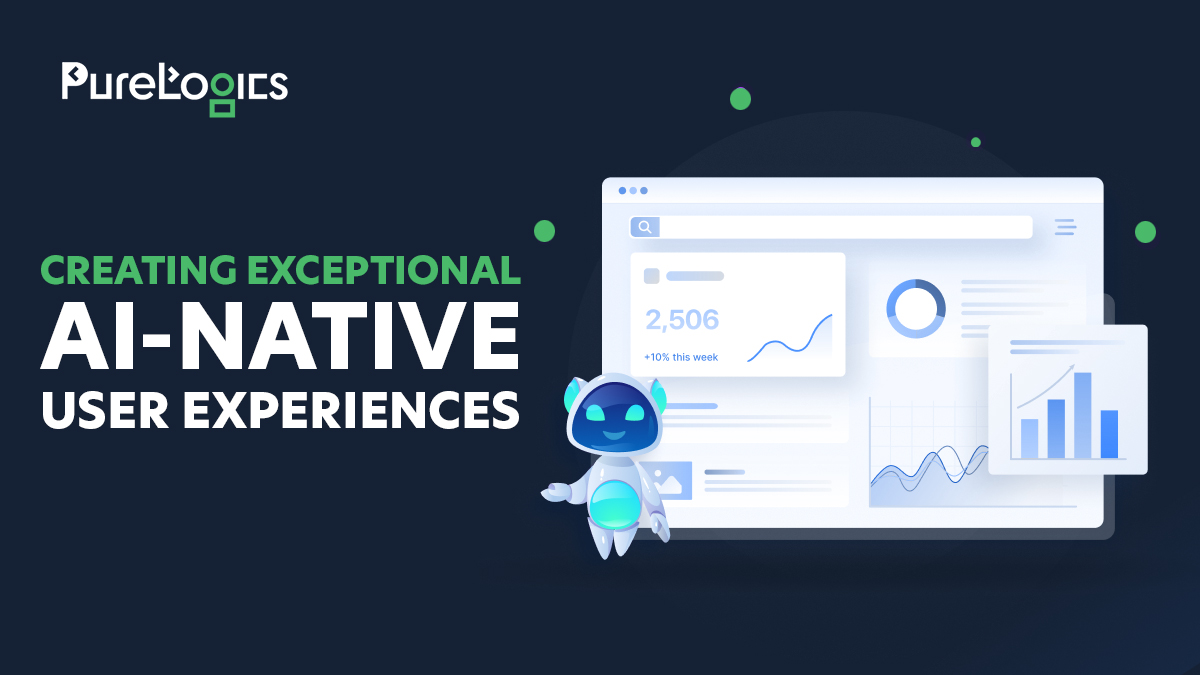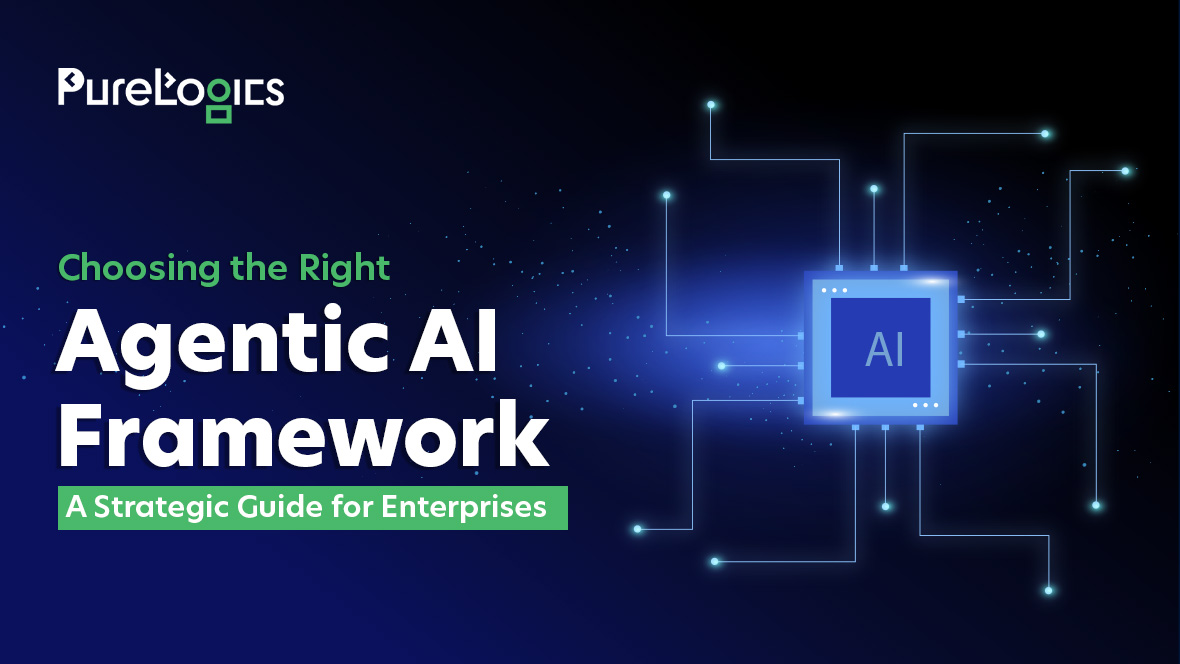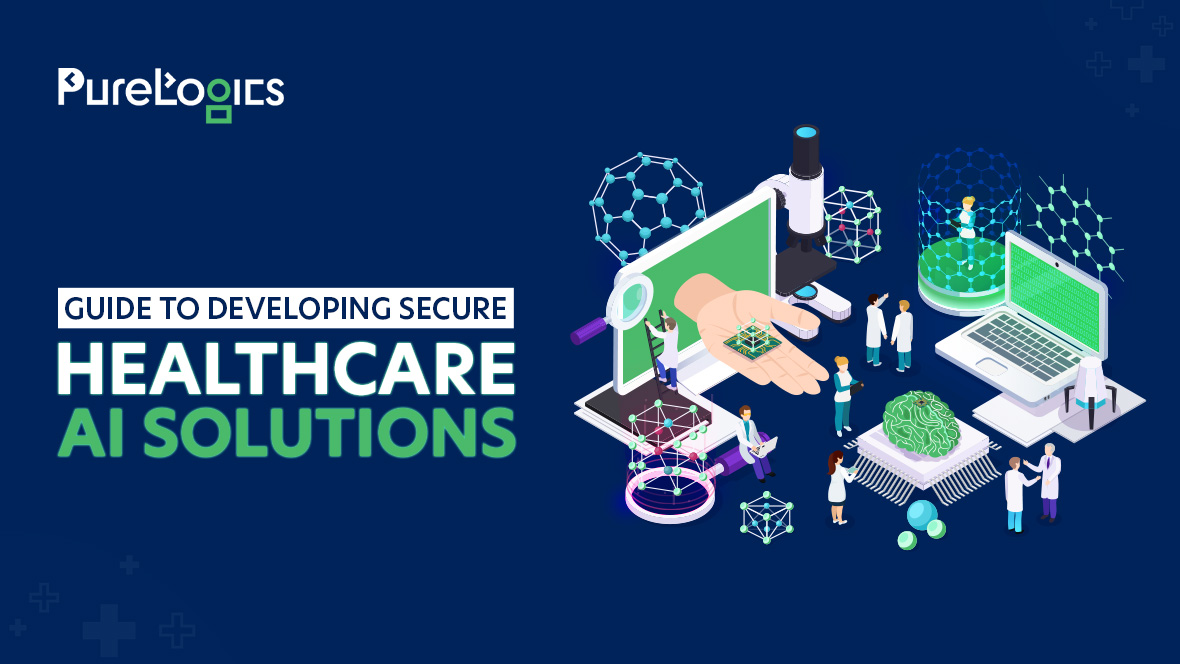Is your AI technology underperforming in terms of user satisfaction? According to recent studies, 68% of users stop using AI-supported applications due to their user experiences. This stat brings a critical issue under the limelight: ‘the gap between AI potential and user expectations.’
However, what if your AI-native software and applications bridge this gap and meet the exact demands and expectations of the users? In this blog post, the leading generative AI development company in the United States, PureLogics, has discussed the key elements of developing AI-native user experiences that exceed user expectations.
Learn from industry leaders and see how their strategies create exceptional AI native user experiences. So, without any further ado, let’s start reading!
An Overview of AI-Native User Experience
An AI-native user experience (UX) integrates AI to enhance usability, personalization, and efficiency. It uses AI capabilities to predict user needs, automate tasks, and offer personalized interactions. Unlike traditional UX, AI-native UX is dynamic. It learns from user behavior to continuously improve the user experience.
AI-Native vs AI-Enabled Solutions
In AI-enabled solutions, products, services, or systems function with AI, however, AI isn’t fundamentally tied to the basic operations. On the other hand, in AI-native solutions, AI is at their core. Look at the table below for a detailed comparison between AI-native and AI-enabled solutions!

Key Elements of Developing AI-Native User Experiences
The following are key elements you must consider in order to develop AI-native user experiences. These elements will bridge the gap between your AI software’s capabilities and user expectations.
1. Understanding User Needs and Expectations
Understanding personalized user needs and expectations is the foundation of building an AI-native user experience. In order to incorporate this essential element into your software, you need to conduct detailed user research. Customer interviews, surveys, and usability testing will help your business understand the exact pain points and expectations of the users. Also, this research will help you know how customers engage with AI software and what they require for a satisfying experience.
Example: Google Assistant
Google has always prioritized to understand user needs. The functionalities of Google Assistant are extraordinary, but they didn’t stop understanding user needs by launching it on the market. They are still interpreting user data and feedback to continuously refine the working of Google Assistant. This is why Google Assistant provides quick as well as relevant responses, which ultimately enhances user satisfaction.
2. Intuitive and User-Centric Design
Designing an intuitive interface is extremely important for the success of AI applications. The interface of your AI application must be simple, clean, and easy to navigate. A user-friendly interface is one of the elements that significantly reduces the learning curve for users. So, always incorporate familiar design patterns and elements. It will make users comfortable while engaging with your AI system.
Example: Apple’s Siri
Siri by Apple uses a familiar and minimalistic design. This familiarity helps its users to easily understand and use the features of Siri. A user-centric design of Siri has significantly boosted user experience.
Is your AI App Easy to Use?
Upgrade to a seamless design with our expertise.
3. Personalization and Customization
AI-native applications work on the principle of personalization and customization. The applications have the ability to understand individual preferences and behavior. The machine learning algorithms enable AI applications to interpret user data in order to provide users with personalized content and recommendations. So, this is how AI-native software and applications increase user engagement.
Example: Netflix
Netflix uses advanced AI algorithms to understand the browsing and watch history of its users. It enables its recommendation engine to suggest content according to the user’s interests and keep users engaged and satisfied.
4. Real-Time Responsiveness and Reliability
Because of artificial intelligence technology, users expect AI applications to be fast and reliable. You know that users don’t even spend another second on a web page or application that takes time to open. So, you also ensure that your AI applications are responsive and reliable. These two elements are essential for building and maintaining user trust and satisfaction.
Example: Amazon Alexa
Amazon’s Alexa is popular for its quick response times and reliability. Its natural language processing capabilities enable Alexa to quickly respond to user commands and provide a smooth user experience.
5. Continuous Learning and Improvement
You must ensure that your AI systems have the utmost capabilities to continuously learn from user behavior and patterns. This ability of AI applications will improve their performance over time. Also, implement feedback mechanisms to allow you users to report issues or suggest enhancements.
Example: Spotify
Spotify’s AI-driven recommendation system continuously learns from user interactions. This feature refines its music suggestions exactly according to users’ listening habits and feedback. This iterative improvement process keeps its users engaged and satisfied.
6. Ethical AI Practices
Ethical AI is another essential element that builds trust with users. Make sure that you never compromise on ethical AI practices and pursue responsible AI development services. Your AI applications should be transparent in their data collection processes. Your users should know about your data collection practices and have control over their personal information.
Example: IBM Watson
IBM Watson is known for its responsible AI development practices. It strictly adheres to privacy policies and ethical guidelines and demonstrates a commitment to responsible AI development.
7. Robust Testing and Quality Assurance
Last but not least, comprehensive testing and quality assurance are essential to creating an AI-native user experience. Performance testing, security testing, and usability testing will help your business identify and resolve issues before product deployment and fulfill the personalized expectations of the users.
Example: Tesla’s Autopilot
Elon Musk’s Tesla is worldwide popular for its comprehensive testing and quality assurance. Tesla’ extensive testing on its Autopilot system ensures that it is reliable and safe to use. Its AI systems keep refining their system through real-world testing and user feedback. This is how Tesla’s AI capabilities are popular among the masses.
Need expert AI testing for your product?
Achieve seamless user experiences with our robust testing and quality assurance.
Ready to Build Exceptional AI-Native User Experience?
Creating exceptional AI-native user experiences requires understanding user needs, user-friendly design, personalization, responsiveness, continuous improvement, ethical practices, and robust testing. By focusing on these key elements, PureLogics and other AI development companies develop AI applications according to customers’ personalized expectations.
AI technology is evolving every day. So, keeping users engaged with the development process is necessary for building AI applications. We at PureLogics have been developing AI applications for more than 19+ years of experience years. Our generative AI experts in the United States have helped many companies build and implement AI systems.
So, if you’re ready to build an exceptional AI-native user experience, give us a call now. We offer a free 30-minute consultation call.


 [tta_listen_btn]
[tta_listen_btn]
 September 9 2024
September 9 2024






